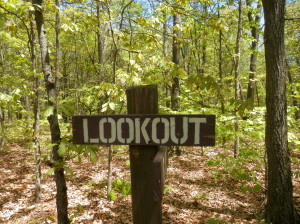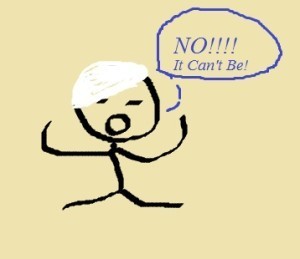Sally Stap's Blog, page 6
June 15, 2014
Gilbert Goat

One life lesson I've learned from my father is the value of listening. . .
Read more of my latest contribution, in honor of Father's Day, at The Blog Pile
Published on June 15, 2014 06:50
June 11, 2014
My First Attempt at a Book Trailer
 This is tricky from mobile devices, so if you don't get right to the video, search YouTube for Sally Stap (Sorry, technical issue)
This is tricky from mobile devices, so if you don't get right to the video, search YouTube for Sally Stap (Sorry, technical issue)
Published on June 11, 2014 19:38
June 2, 2014
Lessons Learned from Brain Surgery – Depression
It is accepted by all that a brain tumor is a "disease" that warrants attention as well as acceptance. Whether one has surgery, radiation, or close surveillance until/if treatment is necessary, their life has changed when hearing the words, "You have a brain tumor."
Just as real for Acoustic Neuroma patients is the very common outcome of Depression. It is rarely discussed as freely as the "thing" growing in one's head. It's common to hear:
"It could have been worse, right?" Well, that's helpful.
"Aren't you just happy to still be alive?" Alive, but different takes adjustment, grieving, and acceptance.
"Why can't you just get over it?" We ask ourselves that too sometimes, just before we walk into a wall, put drops in our dry eye, or grimace when seized by head-pain.
"Post Traumatic Stress Disorder from planned brain surgery?" Yes, it is possible. If one's life has been suddenly and dramatically changed, PTSD is possible. Life looks different when you can't do things that used to be a no-brainer (pardon the pun).
"Traumatic brain injury doesn't result from skilled surgeons who delicately enter your skull does it?" Yes. Surgeons are skilled and they can do everything perfectly, but the brain is a delicate entity that hates intrusion.
Depression is like a blanket. Sometimes, it comfortably surrounds you it that makes you want to stay under forever and just curl up in isolation. Sometimes, it stifles and makes you want to squirm and push it's itchiness away as you crave company. However it fits or feels, depression is real and a common issue following brain surgery.
Life has changed, for most, in ways that cannot be measured or even explained.
So, what do you do about it? Talk to family, friends, and professionals. Sometimes medication is necessary. As unique as each Acoustic Neuroma tumor is, each emotional outcome is similarly unique. Finding a community in your area or online brings camaraderie and smiles of understanding.
Acceptance of the "new you" is a process that does not happen overnight. Like the tide coming in and out from the ocean's shore, waves of depression can come and go. Waves of acceptance come and go as do feelings of frustration with any limitations that may linger. Sometimes you don't recognize the blanket of depression until it has lifted - even a bit.
Time is a great healer. Finding the patience for time to heal is not always easy for AN survivors or the people in their lives. Recognition is the first step. Not being embarrassed by something beyond your control is another step. Pulling it back into your control is the biggest step.
My ongoing advice is "inhale, exhale. . . " and don't hesitate to ask for help.
Published on June 02, 2014 21:00
May 22, 2014
Acoustic Neuroma – Pay to Play

The climb is worth the view. . .
For acoustic neuroma survivors, we frequently have to pay a price for participating activities or being more active than usual. What can be a fun, exciting event for our friends and family frequently takes a toll on AN survivors. Our balance systems are compromised, and for many, our heads still hurt. Additionally, drugs are layered onto our systems to relieve head pain, causing fatigue or less mental clarity. Although acoustic neuroma brain tumors are benign, and we lived, craniotomies do cause the head to be compromised.
We participate though because we do want to! We want to spend time with friends and family. There are trips that we want to go on. We want to live life because we have learned to appreciate the value of it!
I thought might be helpful to explain the effect of a loud gathering on our battered brains – not as a complaint but to put you in our shoes for a moment (or maybe I should say in our heads). Especially as we are going into a Holiday weekend in the US. (Memorial Day)
Our senses are assaulted by noise that is considered normal to the rest of the world (and to us prior to surgery). Frankly, this can be exhausting. We have to plan appropriately to make sure we are adequately rested up prior to an event. After the event, we sometimes need up to a day of rest to get our heads to settle back down.
Our hearing, if single-sided deaf, challenges our brains to work overtime to sort out where noise is coming from or to focus on someone in front of us when our brains randomly pick a voice from across the room to hear instead. If you are on our deaf side and say something, we might unintentionally ignore you. Or do what I call “look like we’re going in for a kiss.” Let me explain. Because we have to turn our head so far around to get the correct ear positioned to hear you, it puts our face directly, and oddly, into yours. No sideways chatter for us – unless you’re on the correct side.
Our tinnitus gets louder in social settings. Typically it roars after the event for up to a day after we return to a quiet location.
Our dry eyes tend to get worse through the day. So by the time evening comes, you will probably see us putting eye drops in frequently, which still might not be adequate for our comfort. We may close our eyes during a concert – yes, to appreciate the music – but also to give our eye a rest.
Talking, even for a typical chatterbox, can become awkward in a noisy setting. We want to talk to you but our brain might be on overload and have difficulty concentrating on the topic at hand.
And then there’s balance. If you put us in a room where we have to stand around balancing a plate of food, a glass with beverage we may suddenly find ourselves weaving. Unsteady despite the fact that we typically drink little to no alcohol due to drugs we may be on, our compromised systems, or the sad fact that alcohol intensifies headaches.
So, if you want to have a great time with someone who has had an Acoustic Neuroma brain tumor, look for us over in the quietest corner, sitting down, and talking to one individual whose lips we may be partially reading.
Of course, the final challenge is group pictures for those of us who have facial paralysis – either full or partial. Please don’t ask us to smile bigger. Accept if we want to be turned a certain way that accentuates the side that actually smiles. A brief explanation to the photographer helps, but sometimes we just want to blend in and NOT talk about it.
Further, if you want to talk to us the next day about what a great party it was? You can find us at home in bed. Oh, and please, don’t be offended if we went home early. Moments with loved ones are cherished.
Published on May 22, 2014 14:27
May 16, 2014
A Sharp Turn in Life – An Interview

A new path in life. This is my radio interview for anyone who wants to hear it. (Really, I didn't sing)
http://www.voiceamerica.com/episode/77947/speaking-of-health-surviving-a-brain-tumor
Published on May 16, 2014 13:06
May 15, 2014
Waiting . . . and waiting. . .

This month's posting on The Blog Pile. Stop by to read it and the writing of some other talented people. . .
http://theblogpile.com/sally-stap/need-to-know-basis/
Published on May 15, 2014 07:32
May 13, 2014
Radio Interview Friday!

I will be on Voice America's internet radio show, "Speaking of Health", hosted by Dr. Michael Kudlas this Friday, May 16 at 1:00 pm edt.
The URL is below. If you can't listen when it's live, it will be available to replay afterward.
http://www.voiceamerica.com/show/2201/speaking-of-health
Press Release:
http://prlog.org/12323068
Wish me luck. . . .
Published on May 13, 2014 16:01
May 6, 2014
Life After Acoustic Neuroma – A day with Headpain

I wake, still for a minute. I slowly stretch and turn my head on the pillow, all in drowsy gratitude. Suddenly my head is struck with pain faster than a cobra’s attack. Eyes pop open, my neck stiffens and the whole right side of my head tightens. There’s nothing like a postcraniotomy headache. It will be a bad head day.
On a bad head day, my brain feels raw inside my skull as if there's no padding between my brain and skull. Nature provides padding through cerebrospinal fluid that flows around the brain and spinal cord, but on a bad head day I feel like I'm running on empty.
After taking a few slow breaths, I slowly ease out of bed, placing my feet firmly on the floor, raising my head and body in slow motion. I sit for a minute and breathe steadily. In slow, deliberate steps, I stand, wait for my balance to adjust to the new day, and slowly head to the bathroom. Moving too fast will freeze my brain in a lock that stops all movement. Most people are familiar with that frozen brain feeling when you drink something cold too fast, times ten. I have learned to live with what is called “Wonky Head” by acoustic neuroma patients.
Like a drunkard, I head to the bathroom, feeling like I have an incredible hangover. Surgery destroyed my balance system, atrophying my right cerebellum, requiring my brain to re-calibrate itself in the morning. Between the bed and bathroom, like pinball in slow motion, I touch my dresser to the left, the wall to the right and then stop, gripping the bathroom door jamb with both hands. Touching things makes me feel more grounded.
Weather changes could be one reason for such a bad head day. I am quite sure the doctors inserted a barometer in my skull after they opened it with their fancy diamond drill bit. I hold my head, as if it would help.
Eventually I drag myself to the shower. Hot water relaxes my head so I empty the hot water heater.
I slowly dress without bending or allowing my head to drop below my heart. The resulting head pain would send me back to bed for at least a half hour. If I drop my hairbrush on the floor, I stare at it like it was a hundred miles away. It isn't worth bending for. I reach for another brush. The first brush could stay on the floor until a better day.
Eventually, I feel my head relaxing. I never take it for granted as I feel together enough to take on the rest of my day. For my brain’s sake, I always hope to avoid sneezing and coughing that will cause an immediate setback.
The next morning it begins again. I awaken and cautiously move, hoping for a better day. Perhaps I would feel up to picking up that hairbrush today.
Published on May 06, 2014 08:01
April 21, 2014
Facial Paralysis: The Day I got My Sniff Back

The first time I visited my facial therapist, Jackie, I learned a lot about facial muscles. Some pull up, and some pull down. Some are rather large, while others are narrow yet long, or short and wide. It had been almost a year since my surgery and the side of my face was just starting to move a bit. Jackie gave me the above diagram and explained to me that while my face was initially paralyzed on the right side, it was now a combination of paralyzed and frozen. While some movement had returned, it immediately had been frozen by muscles that quickly went into spasm. (She also explained Synkinesis, or the mis-wiring of the healing nerve, but I’ll address that another time) What?
Simply put, the brain had been trying to use those paralyzed muscles for so long that it tried too hard. So, when movement returned, the brain kept up with an intensity that was more than needed – causing Charlie Horses in my facial muscles. “But it doesn’t hurt. . .” I protested.
She explained that facial muscles experience Charlie Horse spasms just like your leg muscle in the middle of the night. Except, unlike leg muscles, facial muscles aren’t connected to bone at each end. “What?” She talked me through massaging, stretching, and squeezing various facial muscles until they did hurt. Releasing a facial spasm involves a combination of no pain but a lump, followed by intense sharp pain, and then a quick flash of more pain before it gives up and relaxes, now pain free and lump free. Allowing the muscle to now move as much as it can at this point – possible quite a bit and possible very little.
Acoustic Neuroma patients often have a characteristic look in the face. The lip comes up a bit with a flat motionless nostril. (Looking at the diagram you can see that several muscles come together in that lip/nose area.) In the summer of 2010, during a visit almost two years after my surgery, Jackie asked me to focus on the muscles in my nose. After having me push the very corners of my nose up like a pig snout, I laughed, but felt and saw a change. However, when she asked me to put my thumb in my nose and squeeze the side of my nose between my fingers, I looked at her. “Trust me,” she said.
“Well, ok.” So, I put my thumb into my nostril and squeezed my first finger and thumb together. (Just fyi, there’s lots a sanitizer involved in facial therapy sessions.)
“Just hold it.” And I did for probably a minute or two. “Now let go.”
I looked in the mirror on her desk and sniffed. The side of my nostril moved for the first time since surgery. My eyes got big and I grinned. “Did you see that? I got my sniff back.” And I sniffed again. And again.
And just one more time. "sniff"
Published on April 21, 2014 13:24
April 15, 2014
Lessons Learned – I just wanted a soda
There's a time when caramel colored, sweet, tangy, syrupy, carbonated beverages really hit the spot for me.
A couple days following my brain surgery, I desired a cola. I had been given jello and juice, but nothing tasted right. I wanted to taste something familiar. So, the nurse brought me a cup of ice and a can of Pepsi. I salivated as I watched the caramel liquid flow and bubble over ice. I savored the bubbles as they rose and fell in the white Styrofoam cup. I almost shook with excitement as I drew the drink and straw to my mouth.
By this point, I had learned how to drink again. I held the droopy side of my mouth closed and I drank through a straw held between my still functioning side's lips.
I almost closed my eyes in delight at this little pleasure and return to normalcy that I anticipated with my first sip of Pepsi. I slowly drew liquid through the straw and onto my tongue as if it were a fine wine I was tasting.
Almost spitting but instead gulping awkwardly, I said, "NO! It tastes wrong," I opened my eyes widely. "Something must be wrong with this can." But then it hit me, just as each loss I had encountered since waking up. The nerve that managed my sense of taste had been bruised and made soda taste metallic, tasteless, and wrong. Everything had been bland and tasteless so far, but I hadn't expected soda to taste worse!
So, I pushed the cup and can away and returned to water and ice. Ice that was as crushed as my heart.
Over time, my taste returned to normal, but there are still times when a metallic taste returns just long enough to remind me of that first Pepsi after surgery. I now savor flavors -- and an occasional soda.
Published on April 15, 2014 14:49





